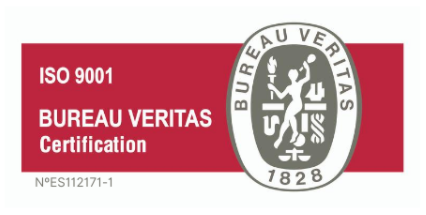Knowing how to calculate the production costs of a factory is an essential task for any business engaged in the production of goods. is an essential task for any business engaged in the production of goods. It is important to know, for example, how much it costs to manufacture each product in order to establish a profitable selling price.
In addition, a cost management management also helps to identify opportunities for opportunities to reduce costs and increase efficiency. In other words, it will improve the factory's profitability. Also, you have to know that it is a process that must be done on an ongoing basis.
We will explain how to calculate the production costs of a factory in a simple and effective way. You will also learn how to identify the different types of costs and how to use them to improve your business and increase your profits. Let's get started!
What are the production costs
Production costs are the expenses related to the manufacture or creation of a good or service. They include direct costs, such as the material and labor required to produce the product, as well as indirect costs, such as rent, electricity and taxes.
Production costs are a key factor in determining key factor in determining the selling price of a product or service of a product or service and in a company's financial planning.
The production costs of a factory vary depending on the type of products being manufactured and the factory's specific processes. However, typical production costs may include:
- Material costs: material costs refer to the expenses to acquire the raw materials or supplies needed to produce the final product. It is the total amount of materials used in the manufacture of the products. This cost can be obtained by adding up the purchase price of each material used.
- Labor: these include the wages and benefits paid to workers to produce the product. It is the total amount of labor required to manufacture the products. This cost can be obtained by multiplying the number of hours worked by the wage/hour of the workers involved in the production process.
- Machinery and equipment costs: these costs refer to the rental or purchase of machinery and equipment necessary for production and the maintenance thereof.
- Indirect manufacturing overhead: are costs that are not directly related to production, such as energy costs, rents, insurance and other overhead. These costs can be calculated by dividing the total indirect costs by the quantity of products produced in a given period. However, one can also talk about energy costs, administration, etc., separately.
- Energy costs: energy consumption to power machines and provide lighting and heating is another important production cost.
- Administrative costs: administrative costs refer to expenses associated with running the factory, including office employee costs, marketing and advertising expenses, accounting costs and legal costs.
- Transportation and logistics: these costs relate to transportation and storage of finished products, delivery to points of sale or to customers.
- Costs of taxes and fees: all costs related to taxes and duties are necessary for the correct operation of the factory.
Once all these costs have been calculated are added together to obtain the total production cost of the factory. of the factory. This cost is used to determine the selling price of the products to ensure that the company makes a profit.
Production costs include a wide variety of expenses, from the purchase of raw materials to administrative management and transportation. It is important to understand them all in order to establish an appropriate selling price and long-term profitability for the factory.
How production costs are properly calculated
To calculate the production costs of a factory it is necessary to follow the following steps:
- Identify the elements involved in the production process: materials, machinery, labor, energyfactory rent, etc.
- Determine the costs of each of these elements, both fixed and variable.
- Add the variable and fixed costs of each item to obtain the total cost per unit produced.
- Identify which units are produced in a given period (day, week, month, year) produced in a given period (day, week, month, year), and multiply the total cost per unit produced by the number of units produced.
- Add production costs for the period for the period (in which the costs were calculated) to obtain the total production cost of the factory.
- If the unit cost of production is to be determined, the total cost of production must be divided by the number of units produced in the same period.
It is advisable to perform production costing on a regular basis on a regular basis to measure the level of profitability of the factory and to look for possible cost improvements to increase it.
Example of production costs
There are many examples of production costs and these will depend on the factory, industry and other details. Generally they are those mentioned above such as the cost of raw materials, labor or machinery. or machinery.
It may also include transportation if it also belongs to the factory company, the cost of stock or storage, e.g. software or other computer systems, marketing or advertising costs that may be associated with the production, as well as the costs of quality testing, shipping costs, forms, etc.
You already know how to calculate the production costs of a company or factory. It is a fundamental process for any company seeking to maximize profitability and adjust its selling prices. Accurate knowledge of production costs enables companies to make informed decisions about pricing strategies, cost reduction and production efficiency.
On the other hand, to be even more efficient, we recommend you to use our MES system system and our specialized modules. Ask without obligation and find out how we can help you.

Product Manager at MESbook
Industrial organization engineer with 4 years of experience in real-time factory management as KAM.




